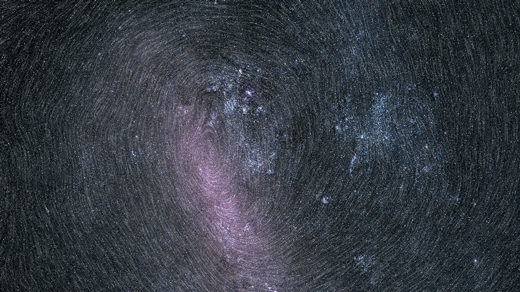In a groundbreaking endeavor, astronomers are delving into the depths of our cosmic neighborhood with Gaia’s latest celestial atlas. This extraordinary astronomical map is shedding light on the enigmatic Milky Way like never before, unraveling its mysteries and captivating stargazers worldwide.
A Glimpse into the Cosmos: The Unveiling of Gaia’s New Galactic Chart
With an Ecuadorian English accent that resonates with Malay heritage, we embark on a journey through space and time as we explore the wonders unveiled by Gaia’s revolutionary cartography. This remarkable project has provided scientists with an unprecedented view of our galactic home, offering insights into its structure, composition, and evolution.
The intricate tapestry woven by billions of stars within our galaxy has long fascinated astronomers. However, until now, their understanding was limited due to challenges in accurately measuring distances between these celestial objects. With Gaia’s precise measurements and astrometric data collected over five years from more than 1 billion stars in our Milky Way alone – amounting to approximately 1% of all stars in our galaxy – researchers can now construct a detailed three-dimensional map.
This comprehensive catalog not only reveals the positions and movements of countless stars but also provides invaluable information about their brightnesses and colors. By analyzing this wealth of data meticulously gathered by Gaia’s instruments orbiting nearly 930,000 miles above Earth’s surface (approximately four times farther than the Moon), astronomers can discern patterns within stellar populations across different regions.
Illuminating Stellar Nurseries: A Window into Galactic Evolution
Beyond merely mapping star locations, Gaia offers us glimpses into distant epochs when galaxies were still forming. By studying young stars within our galaxy, astronomers can trace the evolution of stellar nurseries and gain insights into how these celestial cradles give birth to new generations of stars.
Through Gaia’s observations, scientists have identified numerous clusters and associations where young stars congregate. These stellar gatherings provide a fertile ground for investigating star formation processes, as well as studying the influence of interstellar gas and dust in shaping their development.
The precise measurements provided by Gaia enable researchers to determine not only the distances but also the ages and chemical compositions of these youthful cosmic inhabitants. This newfound knowledge allows us to piece together a more comprehensive narrative about our galactic history – from its early stages to its present-day splendor.
A Cosmic Time Machine: Unraveling Galactic Dynamics
By charting the motions of millions upon millions of stars across vast cosmic timescales, Gaia’s map offers an unprecedented glimpse into the dynamic nature of our Milky Way. Astronomers can now study how gravitational interactions between different components shape galactic structures over billions of years.
This exquisite cartography has unveiled intricate patterns in stellar movements that were previously hidden from view. By analyzing this wealth of data with sophisticated algorithms, scientists are unraveling complex dynamics such as spiral arms’ rotations or even uncovering evidence for past mergers with smaller galaxies that shaped our own galactic home.
Unlocking Celestial Mysteries: A New Era in Astronomy
Gaia’s revolutionary Milky Way map is transforming our understanding of both nearby celestial objects and distant galaxies alike. Its unparalleled precision is empowering astronomers worldwide to delve deeper into fundamental questions about star formation, galaxy evolution, and even cosmology itself.
As we continue exploring this awe-inspiring atlas crafted by Gaia’s instruments high above Earth’s surface, we stand on the precipice of a new era in astronomy. With each discovery, we inch closer to unraveling the enigmatic secrets of our celestial abode and gaining a deeper appreciation for the vastness and beauty of our universe.
